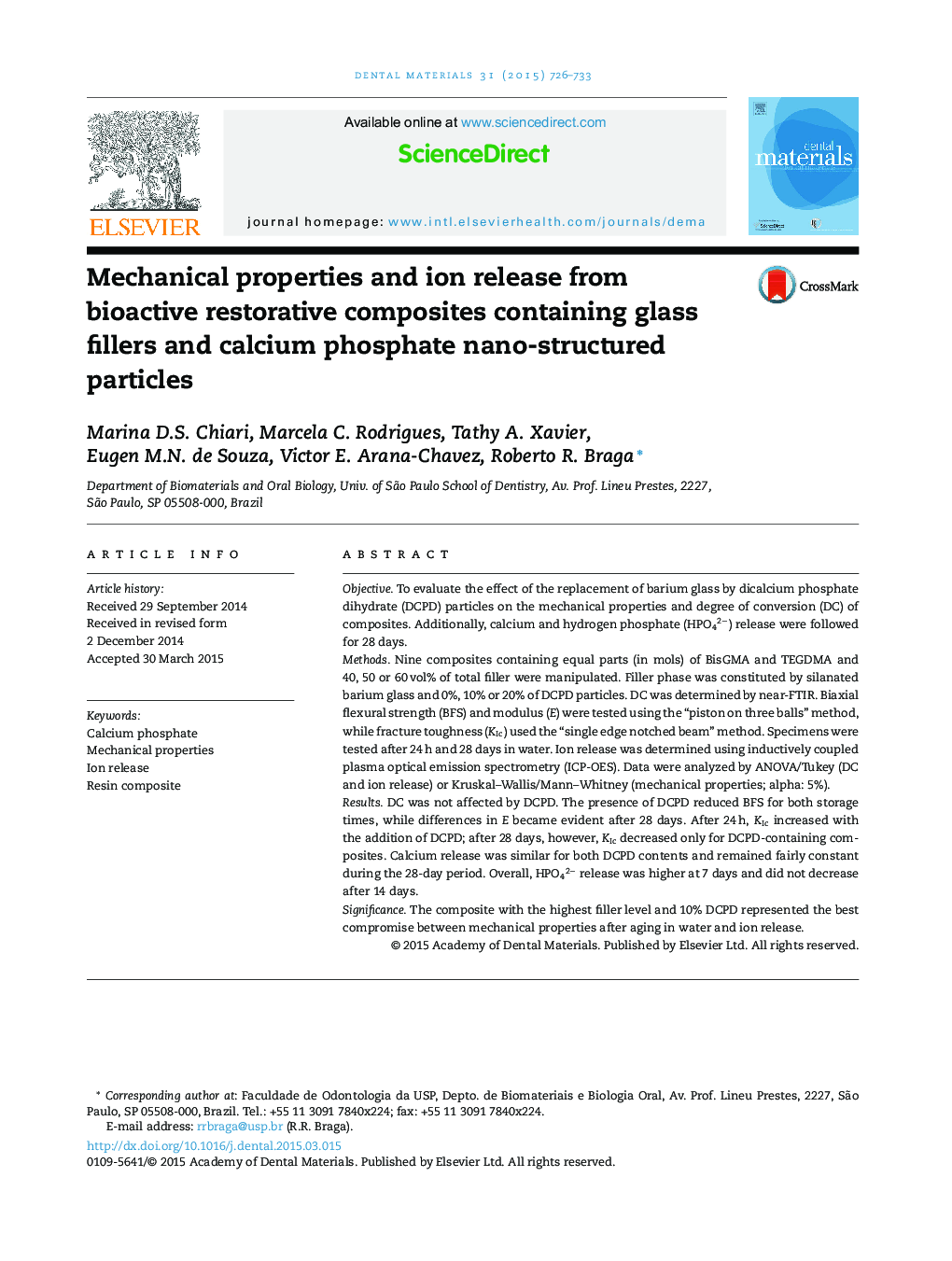| کد مقاله | کد نشریه | سال انتشار | مقاله انگلیسی | نسخه تمام متن |
|---|---|---|---|---|
| 1420667 | 986378 | 2015 | 8 صفحه PDF | دانلود رایگان |
• Replacing barium glass by DCPD did not affect composite degree of conversion.
• Replacing barium glass by DCPD reduced 24-h strength, but not elastic modulus.
• At 28 days, strength and modulus reductions were more severe in the presence of DCPD.
• DCPD increased KIc after 24 h, but caused a reduction after 28 days.
• Calcium release was not affected by DCPD content. HPO42− was marginally affected.
ObjectiveTo evaluate the effect of the replacement of barium glass by dicalcium phosphate dihydrate (DCPD) particles on the mechanical properties and degree of conversion (DC) of composites. Additionally, calcium and hydrogen phosphate (HPO42−) release were followed for 28 days.MethodsNine composites containing equal parts (in mols) of BisGMA and TEGDMA and 40, 50 or 60 vol% of total filler were manipulated. Filler phase was constituted by silanated barium glass and 0%, 10% or 20% of DCPD particles. DC was determined by near-FTIR. Biaxial flexural strength (BFS) and modulus (E) were tested using the “piston on three balls” method, while fracture toughness (KIc) used the “single edge notched beam” method. Specimens were tested after 24 h and 28 days in water. Ion release was determined using inductively coupled plasma optical emission spectrometry (ICP-OES). Data were analyzed by ANOVA/Tukey (DC and ion release) or Kruskal–Wallis/Mann–Whitney (mechanical properties; alpha: 5%).ResultsDC was not affected by DCPD. The presence of DCPD reduced BFS for both storage times, while differences in E became evident after 28 days. After 24 h, KIc increased with the addition of DCPD; after 28 days, however, KIc decreased only for DCPD-containing composites. Calcium release was similar for both DCPD contents and remained fairly constant during the 28-day period. Overall, HPO42− release was higher at 7 days and did not decrease after 14 days.SignificanceThe composite with the highest filler level and 10% DCPD represented the best compromise between mechanical properties after aging in water and ion release.
Journal: Dental Materials - Volume 31, Issue 6, June 2015, Pages 726–733
